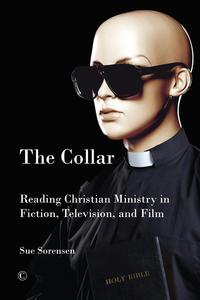Combining thematic analysis and stimulating close readings, "The Collar" is a wide-ranging study of the many ways - heroic or comic, shrewd or dastardly - in which Christian clergy have been represented in literature, from George Herbert and Laurence Sterne, via Anthony Trollope, G.K. Chesterton, T.S. Eliot, and Graham Greene, to Susan Howatch and Robertson Davies, and in film and television, such as "Pale Rider", "The Thorn Birds", "The Vicar of Dibley", and "Father Ted". Since all Christians are expected to be involved in ministry of some type, the assumptions of secular culture about ministers affect more than just clergy. Ranging across several nations (particularly Britain, the U.S., and Canada), denominations, and centuries, "The Collar" encourages creative and faithful responses to the challenges of Christian leadership and develops awareness of the times when leadership expectations become too extreme. Using the framework of different media to make inquiries about pastoral passion, frustration, and fallibility, Sue Sorensen"s well-informed, sprightly, and perceptive book will be helpful to anyone who enjoys evocative literature and film as well as to clergy and those interested in practical theology. Sue Sorensen is Associate Professor of English at Canadian Mennonite University, Manitoba, and an active member of First Lutheran Church in Winnipeg. She is the author of a novel, "A Large Harmonium", and the editor of "West of Eden: Essays on Canadian Prairie Literature". "A marvellous mix of scintillating literary criticism and probing theological reflection, Sue Sorensen has provided insight into why funny stories are funnier and tragic stories more tragic when a clergyman is the principal character. But she also explores the deeper question, "Have these artists, as outsiders looking in, captured that mysterious soul of the one who has that special call from Christ?" Dale Ahlquist, President, American Chesterton Society. "Like every professional, the minister inherits images he or she did not create and may or may not want to project. Some of these images persist well beyond the epochs that shaped them. A few are positive, even heroic; many are negative and demeaning. Not only for those directly involved in the vocation, but for all who try to understand what the church has been and is, it is good to sort out these sometimes "graven" images. And what better way of doing that than by considering the great stories in which clergy have some degree of prominence? Douglas John Hall, Author of "What Christianity Is Not". Это и многое другое вы найдете в книге The Collar (Sue Sorensen)
The Collar Sue Sorensen
Подробная информация о книге «The Collar Sue Sorensen». Сайт не предоставляет возможности читать онлайн или скачать бесплатно книгу «The Collar Sue Sorensen»
